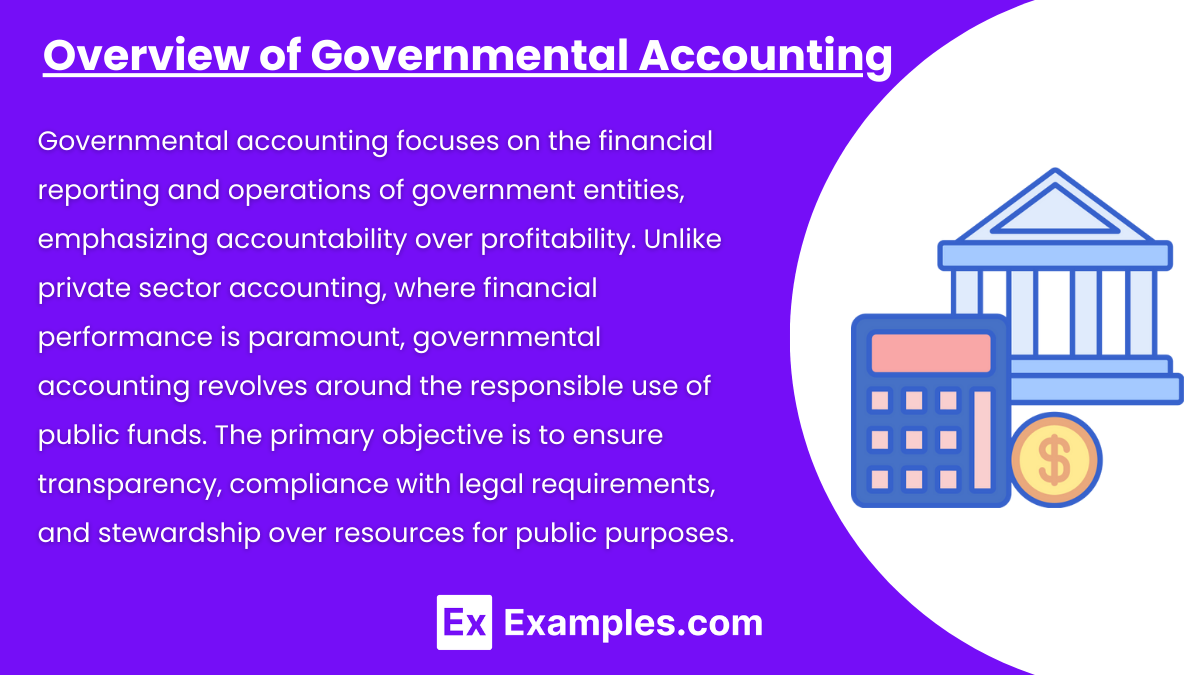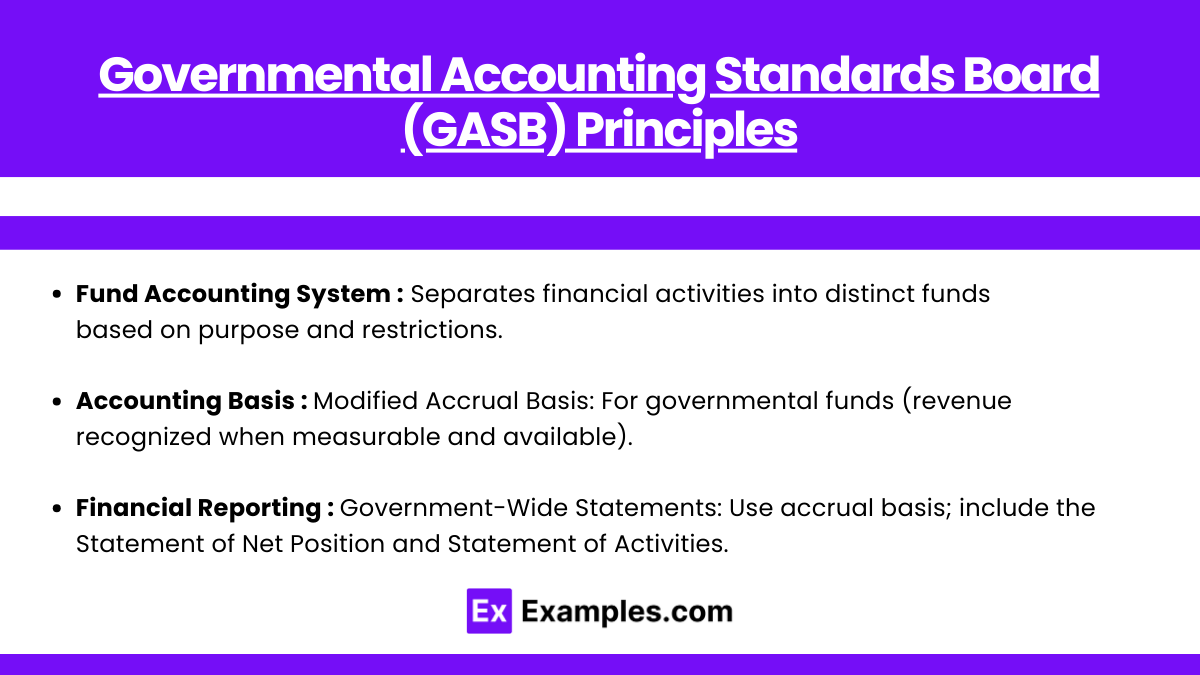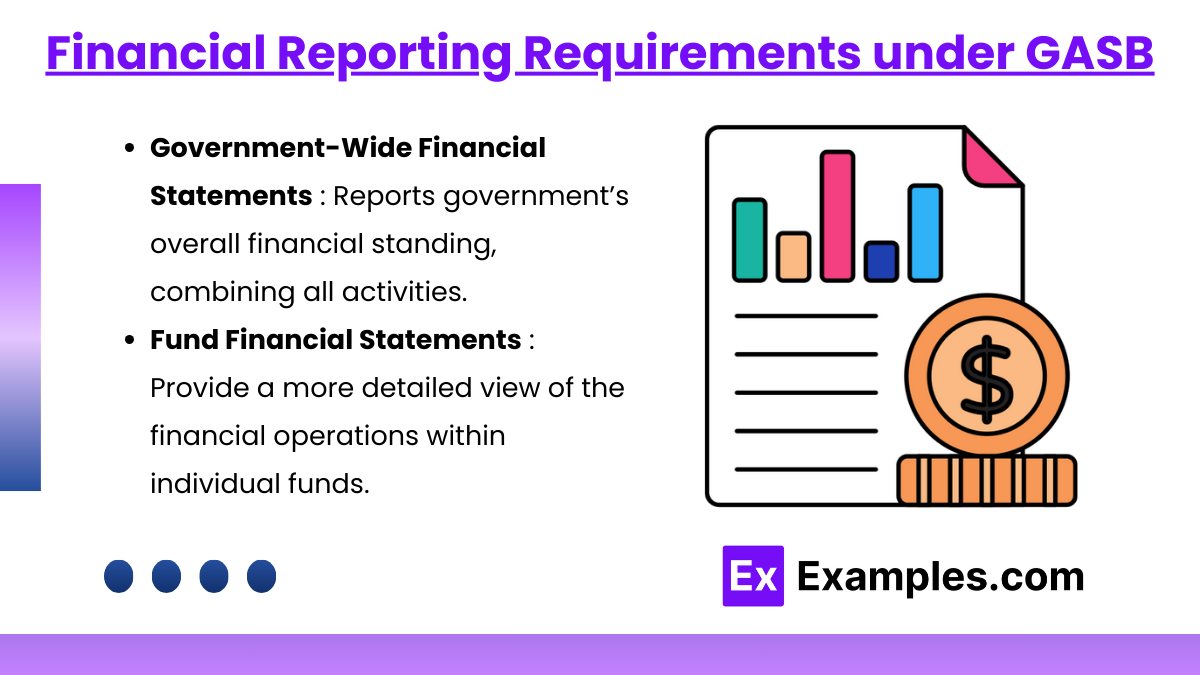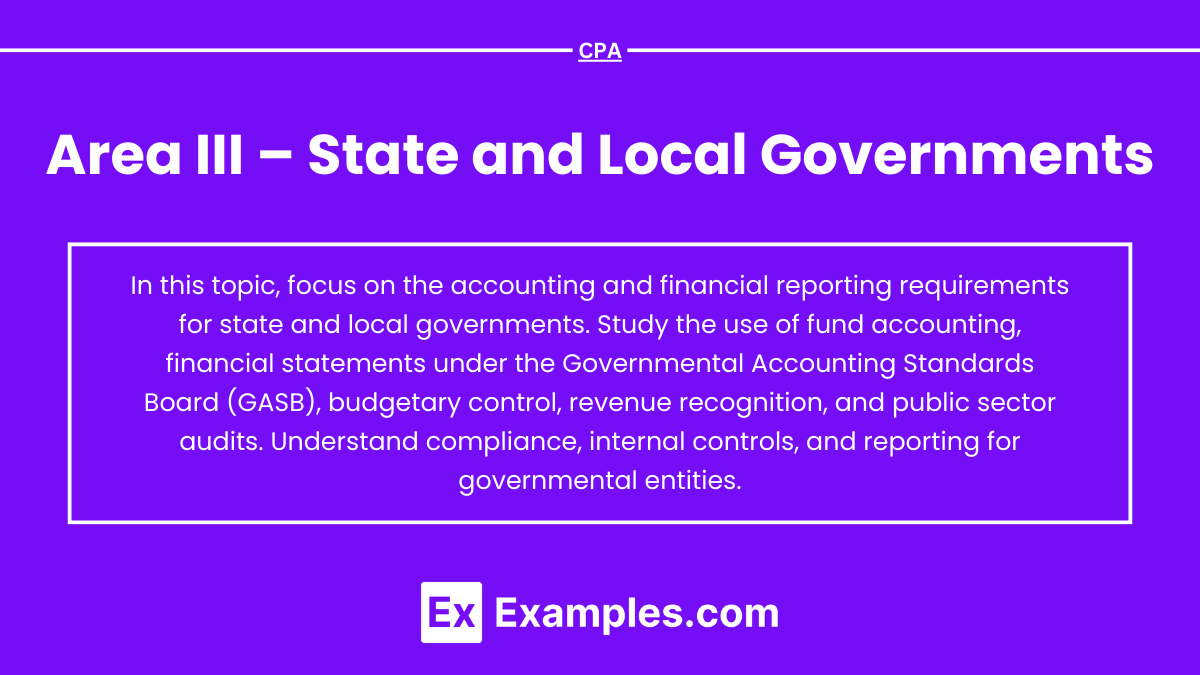State and local governments use distinct accounting principles to ensure transparency, accountability, and compliance with legal and financial reporting standards. Governed by the Governmental Accounting Standards Board (GASB), these entities rely on fund accounting to manage resources for specific activities, using governmental, proprietary, and fiduciary funds. The modified accrual method is applied for short-term financial focus, while full accrual accounting is used for long-term activities.
Learning Objectives
In studying "Area III – State and Local Governments" for the CPA Exam, you should understand the unique accounting principles governing state and local entities, including the use of fund accounting and compliance with GASB standards. Analyze how governmental funds, proprietary funds, and fiduciary funds are reported and explore the differences between modified accrual and full accrual accounting. Evaluate the structure of government-wide financial statements, the importance of budgetary compliance, and the role of Comprehensive Annual Financial Reports (CAFR). Additionally, apply your knowledge to assess financial health, monitor inter-period equity, and interpret budget-to-actual comparisons in CPA exam practice questions.
1. Overview of Governmental Accounting

Governmental accounting focuses on the financial reporting and operations of government entities, emphasizing accountability over profitability. Unlike private sector accounting, where financial performance is paramount, governmental accounting revolves around the responsible use of public funds. The primary objective is to ensure transparency, compliance with legal requirements, and stewardship over resources for public purposes.
Governmental accounting focuses on accountability and budgetary compliance rather than profitability.
State and local governments are required to produce financial reports that meet both legal and public transparency standards.
Unlike private entities, governments focus on fund accounting, dividing resources based on purposes such as operations, capital projects, or debt service.
2. Governmental Accounting Standards Board (GASB) Principles

The Governmental Accounting Standards Board (GASB) establishes accounting and financial reporting standards for U.S. state and local governments. These principles ensure consistency, transparency, and accountability in the financial reporting of public entities. GASB's goal is to provide stakeholders—citizens, creditors, and oversight bodies—with relevant and reliable financial information to assess the government's performance and financial health.
Fund Accounting System : Separates financial activities into distinct funds based on purpose and restrictions.
Accounting Basis : Modified Accrual Basis: For governmental funds (revenue recognized when measurable and available).
Financial Reporting : Government-Wide Statements: Use accrual basis; include the Statement of Net Position and Statement of Activities.
Budgetary Reporting and Compliance : Comparison of budget-to-actual results to ensure compliance with approved budgets.
3. Types of Funds

State and local governments use fund accounting to segregate resources for different activities. The key fund categories are:
Governmental Funds: Governmental funds are used to account for activities primarily financed through taxes and other public resources.
General Fund: The main operating fund of the government.
Special Revenue Fund: Accounts for resources restricted to specific purposes.
Capital Projects Fund: Used to manage financial resources for capital improvements.
Debt Service Fund: Accounts for funds used to repay long-term debts.
Permanent Fund: Holds resources whose principal remains intact, but the income is used for public purposes.
Proprietary Funds: Proprietary funds account for government activities that operate similarly to private-sector businesses.
Enterprise Funds: Operate like businesses, charging users for services (e.g., water utilities).
Internal Service Funds: Provide services to other government departments on a cost-reimbursement basis.
Fiduciary Funds:
Pension and Other Employee Benefit Trust Funds: Manage pension assets for public employees.
Agency Funds: Hold resources temporarily for other entities or groups.
4. Financial Reporting Requirements under GASB

State and local governments must prepare two main sets of financial statements:
Government-Wide Financial Statements:
Statement of Net Position: Reports government’s overall financial standing, combining all activities.
Statement of Activities: Provides information on revenues and expenses for government activities.
Fund Financial Statements:
Provide a more detailed view of the financial operations within individual funds.
Use modified accrual accounting for governmental funds, recognizing revenues when measurable and available, and expenses when incurred.
5. Budgetary Accounting and Compliance

State and local governments are required to adopt annual budgets for their general fund and significant special revenue funds.
Budget-to-actual comparisons are included in the financial reports to demonstrate compliance with approved budgets.
GASB encourages the use of a comprehensive annual financial report (CAFR), which includes:
Introductory section: Overview and letter from the government’s management.
Financial section: Government-wide and fund financial statements with budget comparisons.
Statistical section: Data reflecting long-term trends and economic conditions.
Examples
Example 1: Comprehensive Annual Financial Report (CAFR) Preparation
State and local governments prepare a CAFR, which includes government-wide and fund-based financial statements. This report consists of three sections: introductory (overview and management's letter), financial (statements, budget comparisons, and notes), and statistical (long-term data and economic trends). A candidate must understand the preparation and components of a CAFR to analyze a government’s financial position accurately.
Example 2: Fund Accounting and Reporting
Governmental entities operate multiple funds to account for resources based on their intended use. For example, a general fund covers day-to-day operations, while a capital projects fund is allocated for large infrastructure projects. CPA candidates need to know how to classify and report different types of funds and apply modified accrual accounting for governmental funds.
Example 3: GASB Reporting Standards Implementation
The Governmental Accounting Standards Board (GASB) provides guidelines for financial reporting by state and local governments. A notable example is GASB Statement No. 34, which introduced the dual presentation of government-wide financial statements alongside fund-level reporting. CPA candidates must apply GASB standards to evaluate financial statements and ensure compliance with public sector accounting principles.
Example 4: Pension Fund Reporting
Many state and local governments manage pension funds and other employee benefit plans. The financial health of these pension systems is critical for long-term fiscal sustainability. CPA candidates need to understand how to calculate and interpret net pension liabilities and evaluate the adequacy of pension fund investments to ensure they meet future obligations.
Example 5: Budgetary Compliance and Variance Analysis
Governments are required to adopt and follow annual budgets, with comparisons of budgeted vs. actual expenditures included in their financial reports. Candidates need to perform variance analysis to assess compliance and financial performance. For example, if a city exceeds its budget allocation for public safety services, the variance analysis will help identify the cause and guide corrective actions.
Practice Questions
Question 1
Which of the following is a primary characteristic of modified accrual accounting used by state and local governments for governmental funds?
A) Revenues are recognized when earned, and expenses are recognized when incurred.
B) Revenues are recognized when measurable and available, and expenditures are recognized when incurred.
C) Revenues are recognized when collected in cash, and expenditures are recognized when paid.
D) Revenues are recognized when budgeted, and expenditures are recognized when approved.
Answer: B) Revenues are recognized when measurable and available, and expenditures are recognized when incurred.
Explanation: Modified accrual accounting is used by state and local governments specifically for governmental funds. It focuses on current financial resources, meaning revenues must be measurable (amount can be reasonably determined) and available (collectible within the current period or soon enough thereafter to pay liabilities). Expenditures are recognized when the related liabilities are incurred, with exceptions for long-term debt. This approach differs from the full accrual method, which recognizes revenues when earned and expenses when incurred.
Question 2
What is the primary purpose of the government-wide financial statements in state and local government reporting?
A) To provide detailed reports on each individual fund’s activities.
B) To compare the government’s actual performance to its budget.
C) To provide a long-term view of the government's overall financial position and activities.
D) To report the government’s compliance with statutory budget laws.
Answer: C) To provide a long-term view of the government's overall financial position and activities.
Explanation: Government-wide financial statements present the financial activities of a state or local government using the accrual basis of accounting, similar to private-sector financial reporting. They provide a comprehensive, long-term perspective on the government’s overall financial health, capturing both operational and capital activities. These statements include the Statement of Net Position and Statement of Activities, focusing on economic resources rather than short-term funds, giving users insight into the sustainability of the government’s operations.
Question 3
Which of the following funds would most likely be used by a local government to manage resources for a new public park construction project?
A) General Fund
B) Capital Projects Fund
C) Debt Service Fund
D) Enterprise Fund
Answer: B) Capital Projects Fund
Explanation:The Capital Projects Fund is specifically designed to account for financial resources allocated for the acquisition or construction of significant capital assets, such as buildings, roads, or parks. This fund ensures that resources dedicated to large-scale projects are kept separate from the government’s general operating funds. The General Fund supports day-to-day activities, the Debt Service Fund is used for debt repayment, and the Enterprise Fund manages activities that operate similarly to private businesses, like water utilities.


